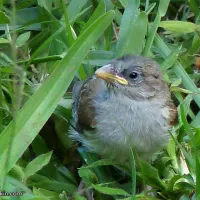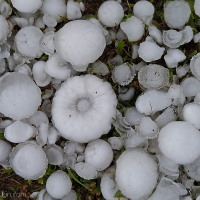Many birds die or are seriously injured when they inadvertently fly into window panes. Reflections of sky and landscape on the glass or else seeing through a window to plants or light on the side can mislead them. Big plate glass windows are the worst for flying birds because of their large seamless reflections.
To try to prevent such collisions windows can be screened or made visible in some way.
Windows can be covered by screens, such as a taut piece of netting, or have items hung or suspended in front of them. Alternatively, paper cut outs or tape or even old reflective CDs can be stuck directly onto the glass. Other ways of reducing reflection include spraying some kind of coating on to the glass or by covering panes with a stick-on film that is visible to birds. Blinds and curtains drawn inside windows can also make a difference.
For a variety of ideas from Bird Watchers Digest for preventing window strikes see here.
Another factor to consider is to position bird feeders away from windows in such a way as to reduce bird flight traffic and flight paths in the vicinity of windows.

In our house we have a small flock of paper birds cut from junk mail stuck onto window panes with reusable prestik/blu-tack to make our windows more visible to birds.
Windows can also be a danger at night, and collisions with windows can kill birds, particularly nocturnal migrants, seemingly lured by lights. To minimise such occurrences, keep curtains or blinds closed at night when the lights are on. For more information from the Cornell Lab of Ornithology see here.
If you have had the sad experience of finding birds that have flown into windows at your home or place of work, consider some appropriate options to minimise such collisions. Many options require only some thought and ingenuity and need not be expensive. In fact some solutions may end up being surprisingly decorative!
Birds face so many hazards and need all the help that they can get. Even small thoughtful interventions by us humans can make the difference between life and death for birds and other creatures. ★
Posted by Carol at letting nature back in.








January 2, 2017 at 3:55 am
These are very good ideas. The suggestion about the bird feeders is a good one – far better to sit outside to watch the birds than to position the feeders near a window. I have created a lovely viewing space in a shady spot in my garden for that purpose.
LikeLiked by 1 person